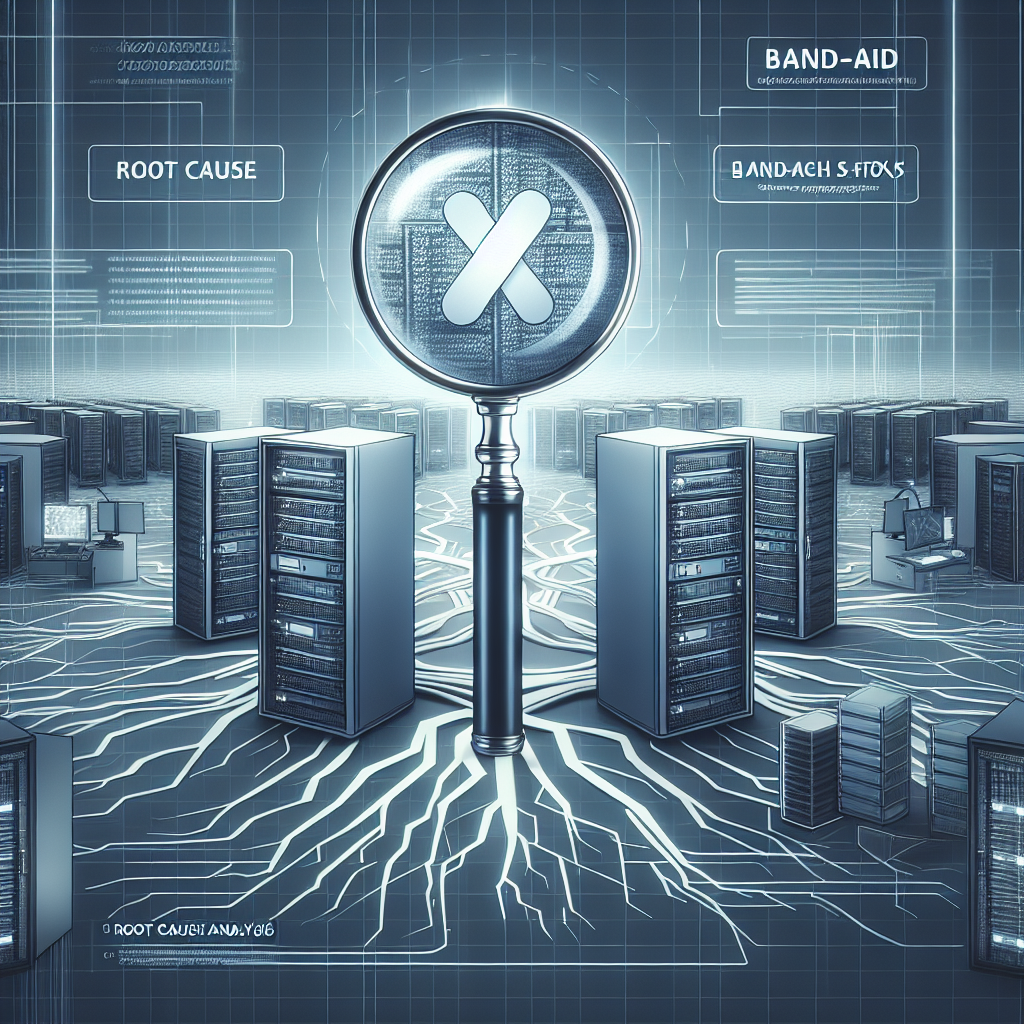In today’s fast-paced and ever-evolving world of technology, data centers play a crucial role in ensuring the seamless operation of businesses and organizations. These facilities house the servers, storage devices, networking equipment, and other hardware that power the digital infrastructure on which we rely for communication, commerce, and countless other essential activities.
However, like any complex system, data centers are not immune to problems and failures. When issues arise, it can be tempting to apply quick fixes in the form of Band-Aid solutions to keep things running in the short term. While these temporary patches may provide immediate relief, they often fail to address the underlying root causes of the problems, leaving the door open for future issues to arise.
This is where root cause analysis (RCA) comes in. Root cause analysis is a systematic process for identifying the underlying causes of problems or failures in a system, rather than just treating the symptoms. By digging deep to uncover the true source of an issue, organizations can implement more effective and lasting solutions that prevent the problem from recurring.
In the context of data center operations, root cause analysis can be a game-changer. Instead of simply rebooting a server or applying a temporary workaround to address a performance issue, data center operators can use RCA to investigate the root cause of the problem. This may involve analyzing system logs, conducting performance tests, or examining the configuration of hardware and software components.
By identifying the underlying cause of the issue, data center operators can implement targeted solutions that address the problem at its source. This can lead to improved reliability, performance, and efficiency in data center operations, reducing downtime and minimizing the risk of future disruptions.
Furthermore, root cause analysis can help data center operators make more informed decisions about infrastructure upgrades and investments. By understanding the root causes of past issues, organizations can identify areas for improvement and prioritize investments that will have the greatest impact on the overall performance and reliability of the data center.
In conclusion, going beyond Band-Aid fixes and embracing root cause analysis can transform data center operations by enabling organizations to address the underlying causes of problems and failures. By taking a proactive and systematic approach to problem-solving, data center operators can improve the reliability, performance, and efficiency of their facilities, ultimately delivering better outcomes for their organizations and customers.




You must be logged in to post a comment.